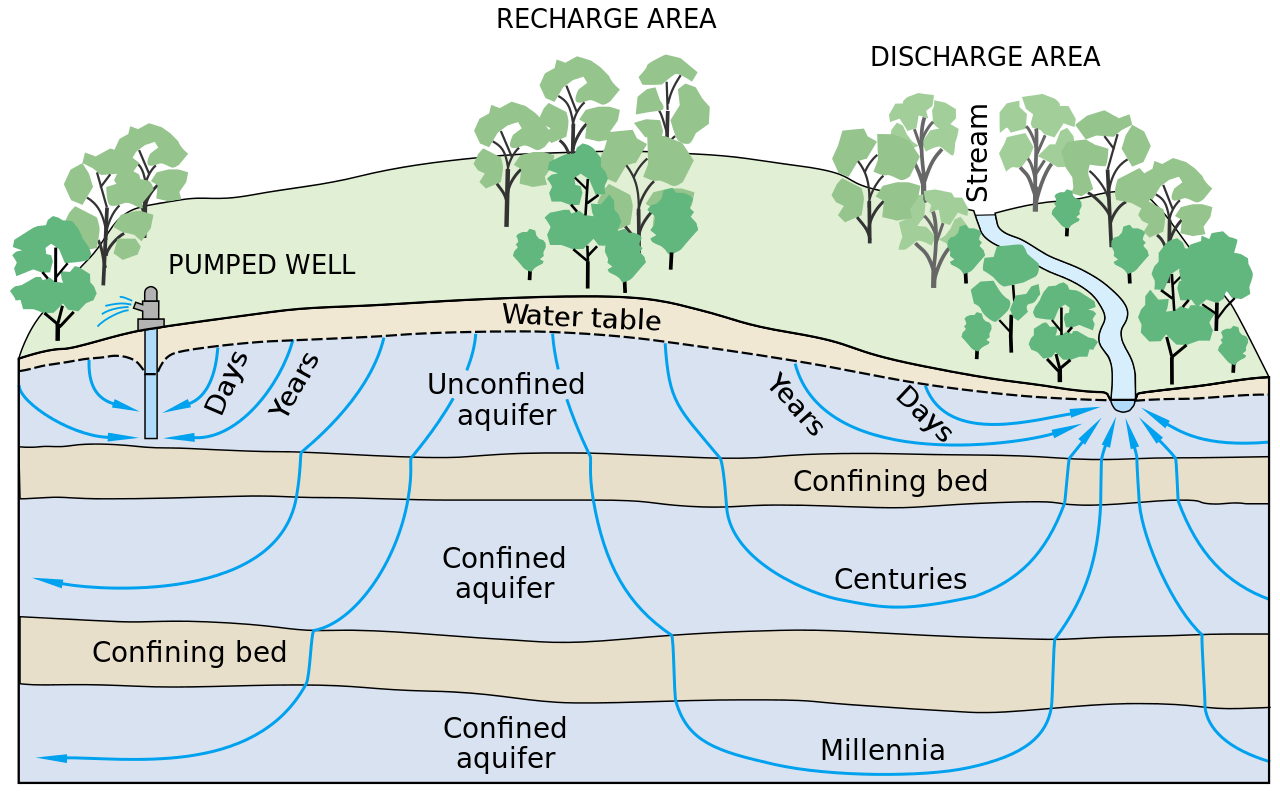Groundwater is water that exists beneath the earth's surface. Most of the freshwater we use comes from groundwater. Groundwater makes up a very small percentage of the amount of freshwater on earth.

Groundwater is both a renewable and nonrenewable resource. The water cycle allows for groundwater to recharge and replenish itself. However, the rate at which groundwater recharges is very slow and so it is possible to drain a groundwater source if the use rate is faster than the recharge rate. Therefore, it is very important to think consciously about your water usage and promote water conservation. Finding ways to promote groundwater recharge (such as with rain gardens or wetland restorations) will also protect groundwater.
Below are some links to learn more about Groundwater.
Our Groundwater Connection video by the Anoka Conservation District
Our Groundwater Connection: Contamination video by the Anoka Conservation District
Handout: If its on the ground, its in our water
Rum River Watershed Groundwater Restoration and Protection Strategies Report- This report looks at the quantity and quality of groundwater in the Rum River Watershed (which contains most of Isanti County). It was completed in 2020 by the Minnesota Department of Health. This GRAPS report was designed to help prioritize and target local efforts to restore and protect groundwater resources in the watershed. You can read the full report by clicking on "Rum River Watershed Groundwater..."
Highlights from the report:
- SWCDs monitor the wells for the DNR- the Isanti SWCD monitors 11
- At the time the report was written there were 18 groundwater-level monitoring wells. 16 of these wells had enough data to determine long term trends. 9 wells had no trend and 7 had an upward trend. The wells in Isanti County showed no trend.
- Groundwater accounts for 100% of the regions drinking water
- Groundwater use has been trending upwards since 1991
- There is a greater risk of groundwater contamination in areas with high pollution sensitivity. It is important to properly maintain potential pollution sources (crop agriculture, septic system, stormwater, etc.) in these sensitive areas.
- The area includes natural features, including surface waters, that depend on groundwater to sustain them
